I've been spinning a little bit here in India and it got me thinking about creating a balanced ply. I've had pretty good success doing this on a spindle and I thought I'd share the method I like to use.
I like to think that my spindle has seen more sights than most.
Once you've spun your singles, you are ready to ply. I like to use the andean plying method but this works just as well from two center pull balls or from two ends of the same center pull ball.
Begin to ply your singles until you are ready to wind them onto the spindle.
Here's a two ply, but how do I know if it's balanced?
Holding both ends of the plied section in place, bring your two hands together and watch the way the yarn reacts. Pay close attention, you need to note which way the yarn twists, if it twist at all.
The yarn may twist around itself clockwise
Or it may twist counter-clockwise
If the yarn twists back on itself, you will need to drop your spindle and twist it in the SAME DIRECTION as the yarn twisted around itself.
This is the key. Note how many times it twisted back on itself and use that as a gauge for how much you will need to correct it. After attempting to correct the twist, do the same test again. Your goal is to have the yarn hang straight down, no matter how close you bring your hands together. The results should look like this.
It may take a little while, but with patience you will achieve this result.
After a couple of sections, you will begin to get a feel for just how long you need to let the spindle spin to get a balanced yarn. At that point, you will not need to check each section before winding on to the spindle. Instead, you can do spot checks occasionally as you ply the remaining yarn.
That little extra effort yields beautifully balanced yarn.
66 yards of perfectly plied A Type Pygora lace weight yarn.
I hope this tutorial is helpful to those of you who haven't been happy with your spindle plied yarn. And for those of you who are advanced spinners out there, feel free to leave your recommendations in the comments.Share this post
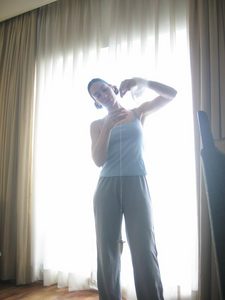
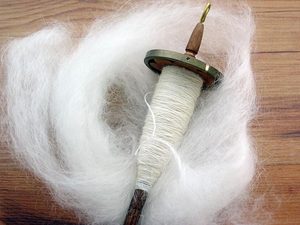
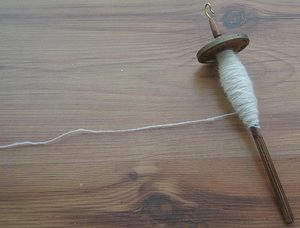
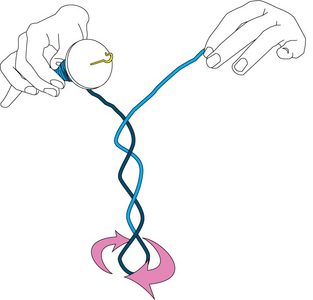
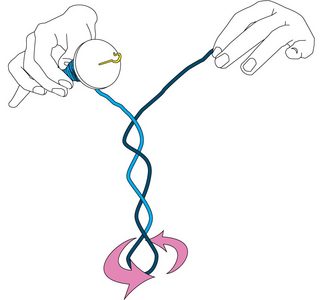
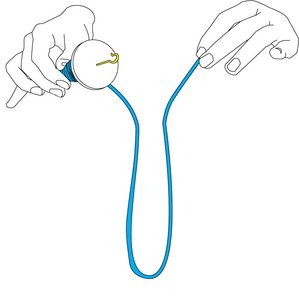
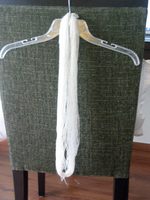
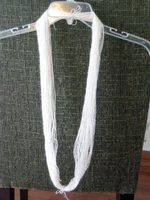
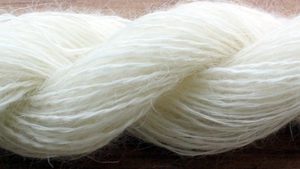
Comments (15)
I'm coming to this late, but I did my first plying today, and that was really helpful; thanks!
Posted by Jess | March 2, 2007 6:52 PM
Posted on March 2, 2007 18:52
Thanks for the tip! Your blog really inspired me to start spindling, I started a month ago and haven't put it down since...
Posted by Bea Apple | October 5, 2006 6:57 AM
Posted on October 5, 2006 06:57
I love your spinning instrustions. You look like you have skills when it comes to the needles, and would love to have your insight at my new knitting board:
http://tightknitfriends.com/forums
I hope to get to meet you there, and get to learn more from your skills.
Posted by Leah | October 4, 2006 12:43 PM
Posted on October 4, 2006 12:43
I love your tutorials! =) I ahve a question though. What if the 'twist' to achieve the balanced plied yarn is not alot (so that its splitty when knitted with)? Should mroe twists be added on even if it will make the plied yarn a little kinked? Thanks.
Posted by kessa | October 4, 2006 7:47 AM
Posted on October 4, 2006 07:47
THANK YOU! I have had a tough time getting a balanced yarn so this was very helpful:)
Posted by beth | October 3, 2006 9:03 PM
Posted on October 3, 2006 21:03
Thanks for the tutorial! You have a knack for stating things simply.
Posted by Rachel | October 3, 2006 8:27 PM
Posted on October 3, 2006 20:27
I keep my eyes on the fibers - when they run parallel to the yarn, it's balanced. The skein will twist when I take it off the niddy noddy, but that's old twist vs new twist. Once it's washed, it's perfectly balanced.
Posted by June | October 3, 2006 5:30 PM
Posted on October 3, 2006 17:30
dang! you make it look so easy! i appreciate your tutorials - i never knew predrafting was so important until i saw it on your site -i'm still working at it....
Posted by debbie | October 3, 2006 3:11 PM
Posted on October 3, 2006 15:11
Thanks for another wonderful tutorial! (This will all make sense to me soon enough...)
Posted by Nonnahs | October 3, 2006 10:30 AM
Posted on October 3, 2006 10:30
Yay! I love these tutorials. I knew how to figure out what your plied yarn should look like (maybe I'll post that tutorial!), but for some reason it didn't occur to me to test the plied yarn this way - how smart. I'll use it on the spindle and the wheel. I love the way your pygora looks. I may spindle-spin mine to retain the softness, as my wheel spinning doesn't have that quality - yet. This is another tutorial for the big list - nice job!
Posted by Julia | October 3, 2006 10:06 AM
Posted on October 3, 2006 10:06
Just beautiful. Looks like a cloud.
Posted by Carol | October 3, 2006 8:26 AM
Posted on October 3, 2006 08:26
This method also works with wheel spinning. You just stop the wheel and do the same thing!
and Janice is right, it needs to be freshly spun singles.
I love your tutorials, it's really nice to get information out there for others. :-)
Posted by Janel | October 3, 2006 8:17 AM
Posted on October 3, 2006 08:17
It may be helpful to note that this method is most accurate when you test yarn that you've just spun, not when it's been sitting on the spindle for a while. After it sits for a little bit, your twist will start to set, and you may not get an exactly correct reading on the amount of plying twist needed from this method.
So if you're not going to ply pretty soon after you spin, spin a length, sample as described above and save that bit of plied yarn to use as a guide for plying later.
Posted by Janice in GA | October 3, 2006 7:41 AM
Posted on October 3, 2006 07:41
Thanks for this post, Marnie -- I'm a relatively new spinner, and I'm just starting to get a feel for plying on my spindle. These tips are extremely helpful, not to mention timely.
Posted by Catherine in Chicago | October 3, 2006 6:35 AM
Posted on October 3, 2006 06:35
Beautiful yarn Marnie!
Posted by Leah | October 3, 2006 6:13 AM
Posted on October 3, 2006 06:13